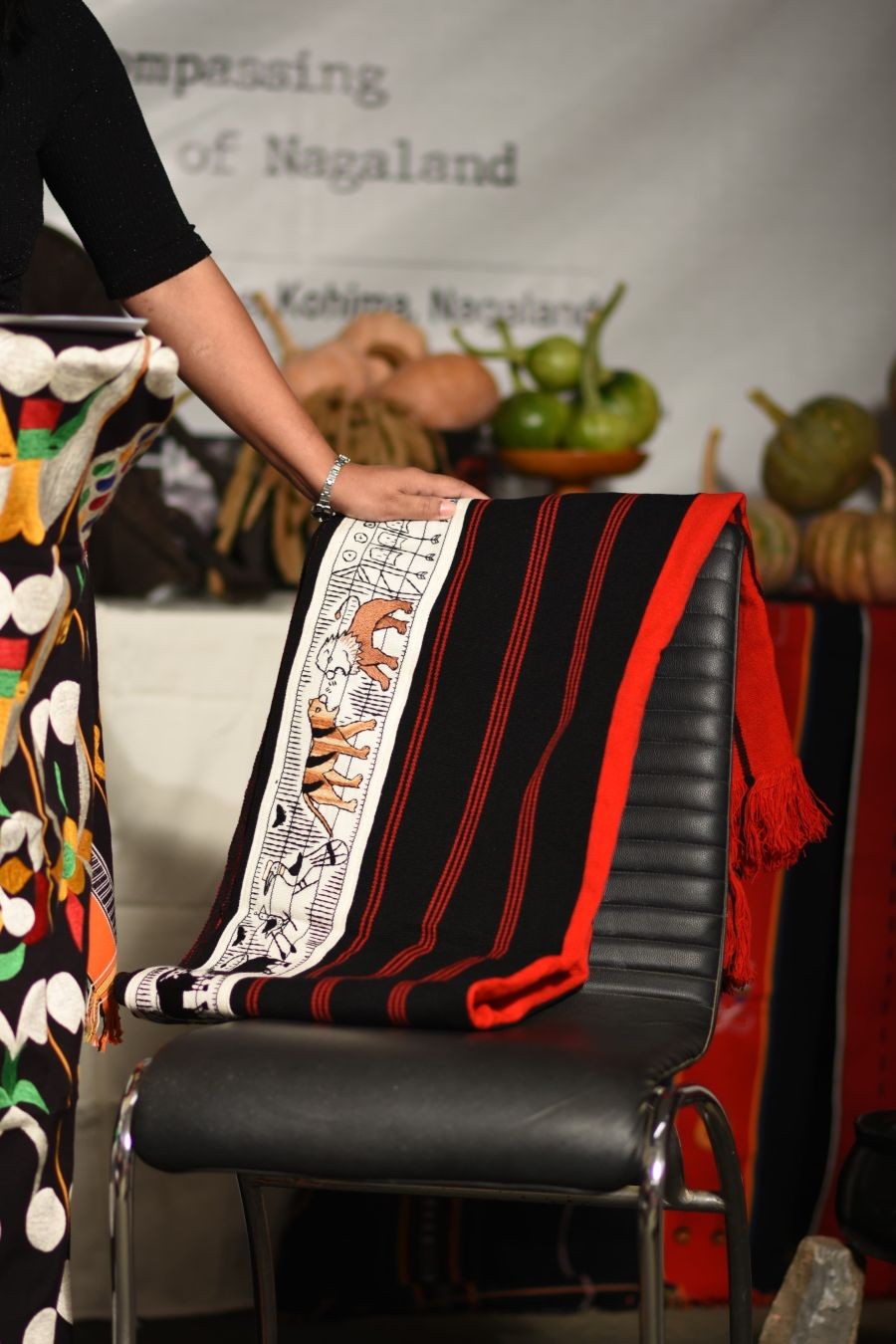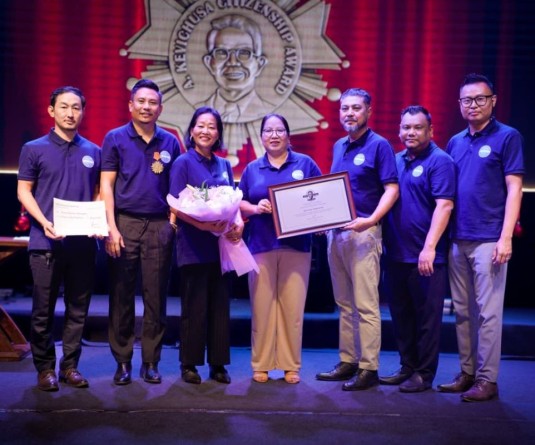Ao Warrior Shawl known as ‘Tsüngkotepsü.’

Morung Express News
Kohima | October 21
The Ao Warrior Shawl, known by its people as “Tsüngkotepsü” is a much revered shawl, which also stands as a symbol of pride and a marker of identity as put across by Limajungla Jamir, Assistant Professor, Kohima College, Kohima.
She was speaking during Mekhela Stories: an evening of storytelling surrounding the rich traditional textile of Nagaland organized by the Rattle & Hum Music Society in collaboration with PenThrill Publication House on October 19 last.
The Ao men shawl, Limajungla put across, “does not merely indicate who he is but rather who he ideally should be” even as the shawl refer particularly to the aspects of identity a man is especially proud of to the notions of reflecting the core of qualifications of a good Ao man in a certain time and context.
Narrating the story of the Ao Warrior Shawl, also known as the Headhunter’s Shawl, she highlighted that the elements and motifs represented in the shawl are identity markers of his wealth and heroism. She also recalled that Nagas are all associated with a very active headhunting tradition before colonial administration until the Baptist mission put an end to it.
Among the Aos, she pointed out that “the most deep lying motif for headhunting seemed to be of social nature because a man’s social position depended upon his success in war.” She further highlighted that “a man was called a boy or even a woman as long as he has not made his contribution to the head trophy collection.”
At the same time, Limajungla remarked that villages with very few head trophies had a very weak reputation and as such, “headhunting feuds and wars would provide an opportunity for a man to prove his bravery.” She said that the decoration of the warriors or headhunters was very important for a man’s social status, and not only that but for him to get a wife of his choice and also to gain the respect of his own villagers and even his enemy.
In the past, she narrated that, “nobody could wear the shawl without earning the right to wear it through acts of bravery like bringing an enemy’s head in the battlefield or by offering the ‘Feast of Merit’ as proof of his wealth. Without these credentials, she said that, “nobody can wear the shawl and whoever violates the code, he was taken to task by the village council and the elders of the village.”
‘Ezungpvui symbolises one of being an overcomer’
“One fine sunny day, an Ezung lady named ‘Chokolo’ rolled out her bamboo mat to dry the job’s tears in the sun and sat down right beside it to start weaving, unaware that an enemy was lurking somewhere in the corner. Everyone was out in the fields but she had chosen to stay in that day because she wanted to dry the job’s tear.”
This is the beginning of the story of the “Ezungpvui Mekhela” as narrated by Meripeni Zares, Additional State Protocol Officer, Home Department even as she continued, “it is said that when a warrior is about to take the enemy’s head, they give out the warrior’s cry. By the time Chokolo heard the warrior’s cry, the enemy was already attacking her but as the enemy jumped right beside her, his foot slipped on the job’s tears and fell down. Immediately, Chokolo sprang to her feet, held her Tsütem (the tool used for weaving) and took the enemy’s head right then and there.”
Affirming that this story symbolises one of being an overcomer, she said that, “no matter whatever obstacles we face or whatever circumstances that we may be living in, we can be like the Chokolo.” “We can be overcomers. May we all go back with our tsütem with full of strength and grace,” she pronounced.





